|
I close out this series of posts about monkey wrenches in the Tison Tool Barn with some wrenches of indeterminate origin. First is this 12 inch wrench with a metal handle. The metal handle suggests that the wrench was manufactured after the beginning of the 20th century. The word "INTERMEDIATE" is stamped on the bar. The letter "S" is stamped in two different places. Finally, the name "C. SWANBUM" is stamped on the bar. I have found a similar monkey wrench marked with "INTERMEDIATE" offered on eBay. The listing did not mention any other markings. I have concluded that the letters "S" and the name "C. SWANBUM" are owner's marks. Curiously, the Tison Tool Barn also holds a pipe wrench with an owner's mark of "S. E. SWANBUM." I do not know what connection there might be between the two names. The next monkey wrench has some owner's marks, but nothing to indicate the manufacturer. It is 18 inches long, and has a knife-style handle. There are two sets of marks on the fixed jaw, "R.M.F." and "452", formed of dots punched into the metal. A star consisting of 4 scratched lines is on the bar. The marks on the above wrench, "R.M.F." to the left, "452" in the center, and the star on the right. Photos by Donald Albury. Next from the Tison Tool Barn is this twisted handle, or ACME, monkey wrench. It is 5 inches long, and has no discernible markings. The ACME monkey wrench is distinguished by a rod which is doubled over so that the moving jaw slides over parallel segments of the rod,with one threaded to take the adjustment nut. The lower section of the parallel rods may be twisted. The U.S. patent for this wrench, 273,171, was issued to Fred Seymour in 1883. At least four different companies manufactured versions of this wrench ranging from 4 to 21 inches long, but production stopped by 1915. This wrench has been badly abused. The final monkey wrench from the Tison Tool Barn is this 21 inch long wrench, the largest monkey wrench in the collection. It has a badly fitted wooden handle. I have not found any readable marks on it. This is no where near the largest monkey wrench made. Coes sold at least two six-foot long monkey wrenches to bridge builders. This completes my coverage of monkey wrenches held in the Tison Tool Barn. Next up: pipe wrenches. Sources:
3 Comments
This is another in a series of posts on monkey wrenches in the Tison Tool Barn with a look at a couple of wrenches from less-well known manufacturers, and a wrench with several marks, despite which I cannot identify the manufacturer. The first wrench below was made by The Lamson and Sessions (L. & S.) Co. of Cleveland, Ohio. Lamson and Sessions was founded in Southington, Ct. (that hotbed of tool and hardware manufacture) in 1866, and moved to Cleveland (another center of tool and hardware manufacture) in 1869. The company is still around, but no longer produces metal products. From its appearance, this wrench was produced in the late 19th century or very early 20th century. It is 6-1/2 inches long. The next wrench below was made by the Girard Wrench Mfg. Co. The company was established as a partnership in 1875 in Girard, Pa., but did not incorporate under the name Girard Wrench Mfg. Co. until 1902. The company continued in business until the 1920s. This wrench is 10 inches long and has a cylindrical wood handle. I have seen a photo of a Girard wrench that is identical to this one, except for having a metal handle. The wrench below was made sometime between 1902 and the early 1920s, likely in the 1910s. The final monkey wrench from the Tison Tool Barn in this post poses a problem. It is marked "P & C" (in two places) and "SOUTHINGTON, CT.". There are some other possible marks, but they are very obscure. I believe that I can make out a mark "H. W. P.", which is likely an owner's mark. I cannot make sense of other possible marks even under a magnifying glass after rubbing the area with chalk. For a while I thought that the wrench was made by the Peck, Stow, and Wilcox Company, which had a plant located in Southington (other tool and hardware companies were also located in Southington, but I have not found a listing of all of them). The wrench looked like another wrench in the Tison Tool Barn that was made by Peck, Stow, and Wilcox. However, I noticed that this wrench does not have the seam on the back of the slider that is present on the three Peck, Stow, and Wilcox wrenches in the Tison Tool Barn, and which seems to be a product of how Peck, Stow, and Wilcox manufactured monkey wrenches, at least after 1896. A couple of suggestions from people I asked for help in identifying this wrench seem to be ruled out by timing. The wrench appears to be from the late 19th or very early 20th century. It was suggested that the wrench belonged to the Philadelphia and Columbia (P & C) RR, but the P & C RR was taken over by the Pennsylvania RR in 1857, well before the period of this wrench. Another suggestion was that this wrench was produced by the P & C Hand Forged Tool Company, but that company was founded in 1920, and I can find no evidence that it ever produced monkey wrenches. For now, I cannot identify who made this wrench. The wrench is 10 inches long. In my next post I will finally finish describing the monkey wrenches held in the Tison Tool Barn. Sources:
Personal and family issues have taken up most of my attention for the past two or three weeks, but I am again finding time to research and write about tools. Monkey wrenches have sometimes been called hammer wrenches. There are some people who maintain that every tool has more than one use, including at least one use that was never intended by the designer or manufacturer. Many workers have found themselves in need of a hammer, but with only a monkey wrench at hand. The back faces of the jaws of a monkey wrench may look like they could serve as a hammer, but those faces normally do not have the hardened steel surfaces required for striking metal. Most of the monkey wrenches in the Tison Tool Barn show evidence of having been used as hammers. The small (5-inch) monkey wrench at bottom center below shows evidence of other abuse, as well. Monkey wrenches with mushroomed and otherwise deformed back faces on their jaws. Photos by Donald Albury. The Tison Tool Barn has three monkey wrenches from the Peck, Stow & Wilcox Company. The company, located in Southington, Connecticut, was formed by the merger of three predecessor firms in 1870, and continued into the middle of the 20th century. Wilcox, Treadway and Company of Cleveland, Ohio was acquired by Peck, Stow, and Wilcox in 1881, and the plant in Cleveland continued in production. The earliest P. S. & W. monkey wrench in the Tison Tool Barn may be from the late 19th century. It has a handle consisting of a cylinder of wood held on a rod extending from the bar and held on by a nut at the end. Later Peck, Stow, & Wilcox wrenches have a knife-handle, with two pieces of wood fastened on either side of a wide metal frame. The wrench does not have any patent information, but the back of the slider has a seam similar to those found on P., S., & W wrenches produced under a patent issued January 14, 1896. This patent was for a method of mounting the slider on the bar, in which the fixed jaw was forged in one piece with the bar, and the slider was split down the back, mounted over the bar, and then welded shut. The usual method at other companies was to slide the slider onto the bar, and then weld the fixed jaw to the bar.This wrench is 9-3/4 inches long and was produced in the Cleveland plant of the Peck, Stow, & Wilcox Company. On the left below is a detail of the marks on this wrench, "P.S.&W.Co. CLEVELAND, O. U.S.A." In the middle is a detail of the back of the slider on this wrench, showing the seam where the two halves of the slider were welded together (similar seams can be seen on the other two P., S., & W. wrenches described below). On the right is a detail of the back of the slider on a wrench from another company, which does not have a seam. Photos by Donald Albury. The next Peck, Stow, & Wilcox monkey wrench in the Tison Tool Barn is from the early 20th century, or possibly the very late 19th century. It is 6-1/2 inches long and has a knife-handle., The marks on it include a patent date of Jan. 14, 1896, but not the "PEXTO" inside an oval trade mark that was introduced in 1914. The final monkey wrench from Peck, Stow, and Wilcox in the Tison Tool Barn is this 10 inch one with a wooden knife handle and the PEXTO in an oval logo, which was introduced in 1914.. The Tison Tool Barn has several wrenches made by the Bemis & Call company, but only the one below is a monkey wrench. This wrench differs from the wrenches displayed above, in that the adjustment knob is threaded on the bar and held on the adjustable jaw by a flange, while on most other monkey wrenches the adjustment knob stays in place, and is attached to a long screw that moves the adjustable jaw. This means that the advantage of a monkey wrench being operable with one hand by adjusting the opening of the jaws with the thumb on the hand holding the handle, is lost with this wrench. This wrench has the mark "Billings" on it, indicating that it was made after the Billings & Spencer Company acquired the wrench part of the business of Bemis & Call in 1939. This wrench is 15-1/2 inches long. I will be looking at more monkey wrenches in the Tison Tool Barn in my next post.
Sources Here are a couple of monkey wrenches from the Tison Tool Barn with markings that I could not identify at first in searches of the Internet. First is the wrench below, which had only the marking shown in the right-hand photo. This wrench, which is 12 inches long, has only the mark shown in the right-hand photo. Although the mark is quite deep, I had trouble deciphering it. In particular, I could not tell whether the two vertical lines were the letter "i" or "l". Trying different combinations of those letters, I finally got a couple of hits on "Mieble", a manufacturer of printing presses. And then I noticed that one web page had both "Mieble" and "Miehle". The fourth letter in the name was "h", not "b". It appears that I am not the only one who has had trouble deciphering this mark. The Miehle Printing Press and Manufacturing Company was an important producer of printing presses from late in the 19th century until well into the 20th century. While I have not found a history or other substantial article about the company on the Internet, it's presses seem to have been well regarded. There is no indication that the Miehle company produced wrenches or any other tools. So, how did this wrench come to be stamped with "The Miehle"? Early in the 20th century wrenches and other tools were included as part of the equipment provided with automobiles and farm equipment. Such wrenches were often stamped with the name of the automobile or farm equipment manufacturer rather than the company that produced the wrench. This was common enough that monkey wrenches were often referred to as "Ford wrenches". While I have not found any source that indicates that the Miehle company provided at least a wrench, and possibly other tools, with its presses, this does seem to be a reasonable explanation for the mark on this wrench. Another wrench also baffled me at first. This wrench, in the left-hand photo below, had an elaborate but badly worn mark, shown in the right-hand photo below. This wrench, which is 18-1/2 inches long, has a badly worn mark on it. Mel MIller, in the Antique and Vintage Tools Forum on Facebook, was able to identify this mark as the logo for the H. D. Smith & Co. Perfect Handle line, perhaps best known by collectors and woodworkers for its screw drivers. However, H. D. Smith & Co. first used Perfect Handles on their wrenches. Perfect Handle wrenches were based on U. S. patents D33,468, 666,029 and D34,136, which were issued in 1900 and 1901, which means that all Perfect Handle tools were produced in the 20th century. The Perfect Handle was forged as part of the bar of the wrench. It was a flat frame as wide as the handle in the plane in which the wrench was turned when tightening or loosening a nut. Two pieces of wood were fastened to the frame to provide a comfortable grip for the user. Earlier wrench handles were generally in the shape of a rod running down the center of a wooden handle, and could be bent if too much force was applied. The shape of the Perfect Handle was much more resistant to bending. Similar handles, often called knife handles, came into use for other monkey wrenches. The term "perfect handle" is sometimes used for any tool handle with wood inserts on a metal frame, but the trade mark "Perfect Handle" was used only by H. D. Smith & Co. I will be looking at more monkey wrenches from the Tison Tool Barn in my next post.
Starting with this post I'm taking a break from woodworking tools. For the next few posts I will be looking at monkey wrenches and other adjustable wrenches in the Tison Tool Barn. Monkey wrenches are adjustable nut wrenches. They have flat, smooth, and parallel faces on their jaws, so that the jaw faces are flat against each other when the wrench is fully closed. A monkey wrench has one jaw fixed to a bar, rectangular in cross-section, which extends to a handle. The second jaw is fixed to a shorter piece that wraps around the bar, which slides along the bar while keeping the jaws aligned. In some early adjustable nut wrenches the jaws were locked into place by a wedge inserted between the bar the and the surrounding piece attached to the lower jaw. In screw or monkey wrenches, the opening between the jaws is adjusted with a screw mechanism. Monkey wrenches derived from 18th century coach wrenches, which were used to tighten or loosen nuts on coaches, including nuts holding wheel hubs on the end of axles. Coach wrenches that were adjusted with a screw mechanism were called monkey wrenches from early in the 19th century. Monkey wrenches were in wide use well into the 20th century. They were made in a range of sizes, from 5 inches long to six feet long. By the 1960s, however, they were disappearing from the workplace, As the new kid on a construction job in the summer of 1962, I was sent off to find a left-handed monkey wrench. I figured it was a joke, but I didn't know what a monkey wrench looked like. The origin of the name "monkey wrench" has been lost. One theory is that the sliding of the lower jaw up and down the bar reminded people of the monkey-on-a-stick toy. (A monkey-on-a-stick consisted of a wooden puppet of a monkey with articulated legs, with the front paws fastened to the top of a stick, and the rear paws fastened to a block which slid up and down the stick, making the monkey jump around.) Another theory is based on the fact that with early screw-mechanism monkey wrenches adjustments were made by twisting the handle, suggesting a connection with twisting the tale of a monkey. The old and often repeated legend that the monkey wrench was invented by a man named Monk, Monck, or Moncky was proved false in the 19th century. As noted above, monkey wrenches in the first part of the 19th century were adjusted by turning the handle. The handles were hollow with internal screw threads which engaged screw threads on the bar. This arrangement meant that workers had to use both hands to adjust the jaw opening. In 1841 Loring Coes received a patent for a screw wrench that could be adjusted with one hand. All of the monkey wrenches in the Tison Tool Barn are derived from that design. Loring Coes and his brother Aury Gates Coes dominated the screw wrench business in the United States for many years. They eventually split the company, and operated independently for many years. The two firms merged again in 1888, forming the Coes Wrench Co. Wrenches made by the Coes Wrench Co. were stamped "Worcester". Bemis & Call, another major manufacturer of wrenches, bought the Coes Wrench Co. in 1928. Wrenches made under the Coes brand after 1928 were stamped "Springfield." The Tison Tool Barn has four monkey wrenches stamped "Coes Wrench Co." and "Worcester," and which means that they were made between 1888 and 1928. They all have "knife" handles, with a flat iron or steel core and wood pieces fastened to each side. I will continue this exploration of monkey wrenches from the Tison Tool Barn in my next post.
|
AuthorI have been a volunteer at the Matheson History Museum. Feeling an affinity with old hand tools (some of which I remember from my youth), I have tried to learn more about the history of the tools in the Tison Tool Barn, and how they were used. All text and photographs by Donald Albury in this blog are licensed under a Creative Commons Attribution-ShareAlike 4.0 International License. All illustrations taken from Wikimedia Commons are either in the public domain, or have been released under a Creative Commons license.
Archives
December 2015
Categories
All
Interesting Sites about Old Tools |
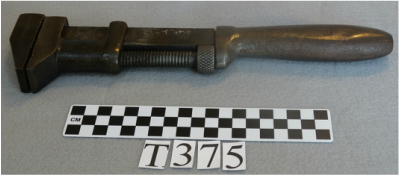
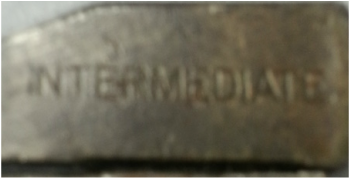
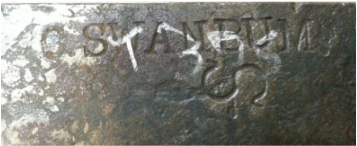

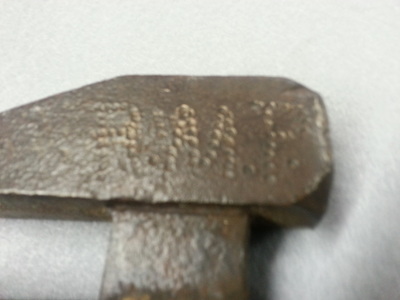
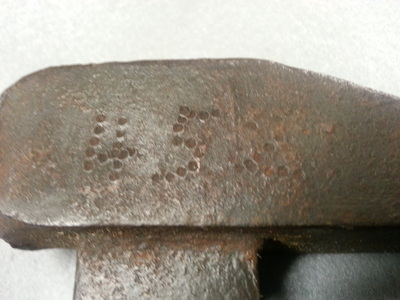
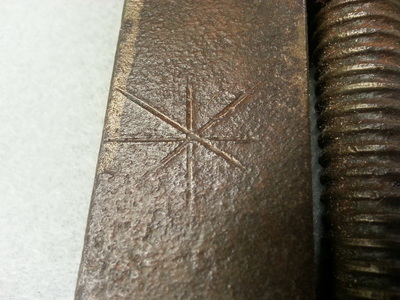
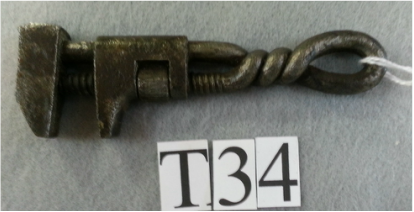

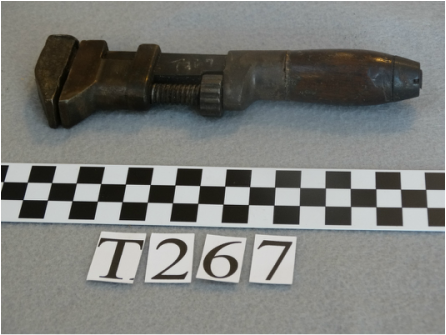
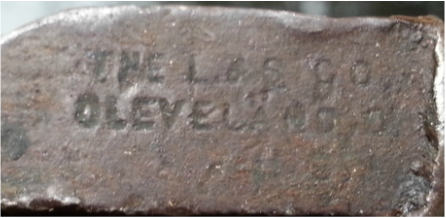
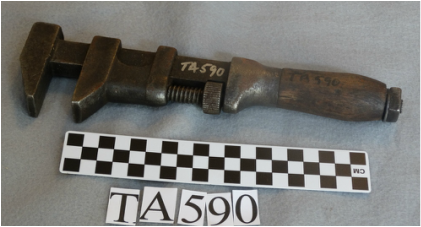
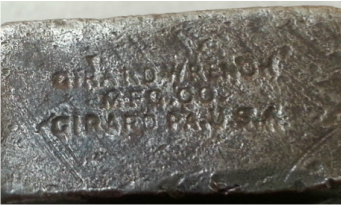
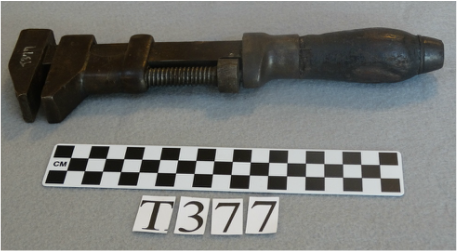
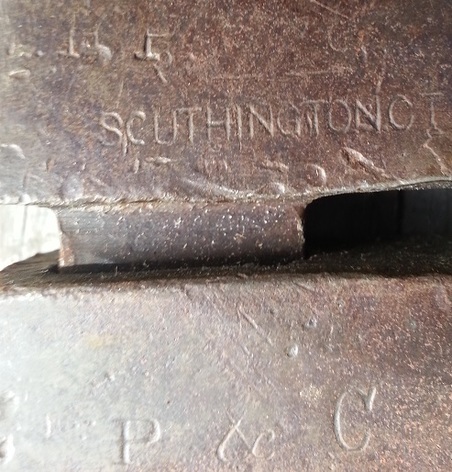
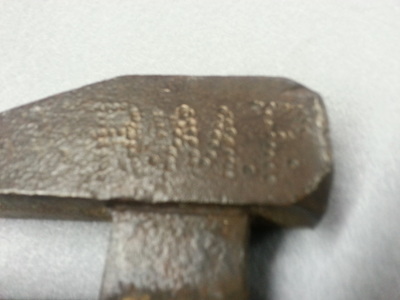
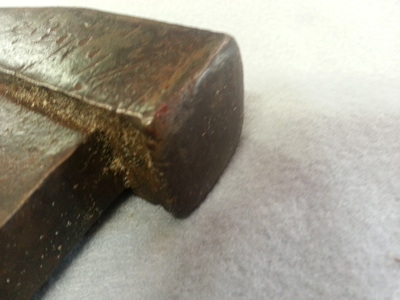
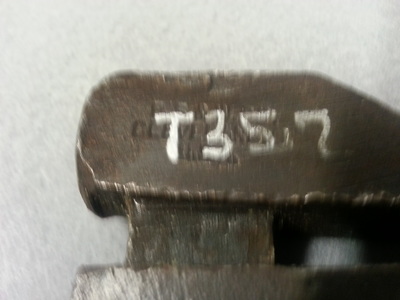
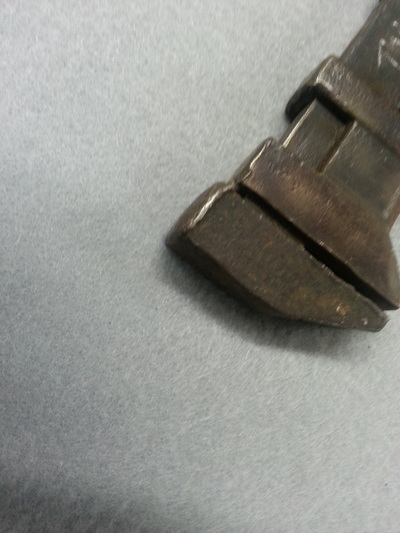
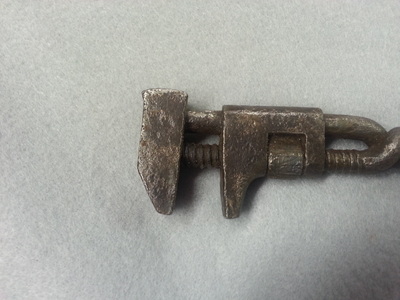
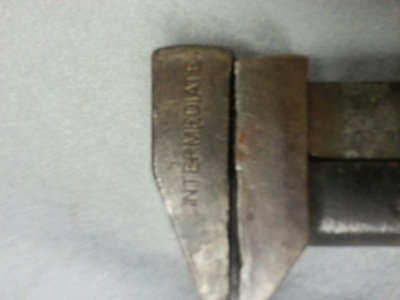
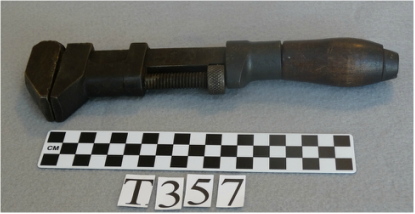
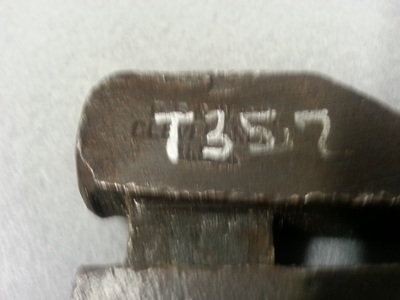
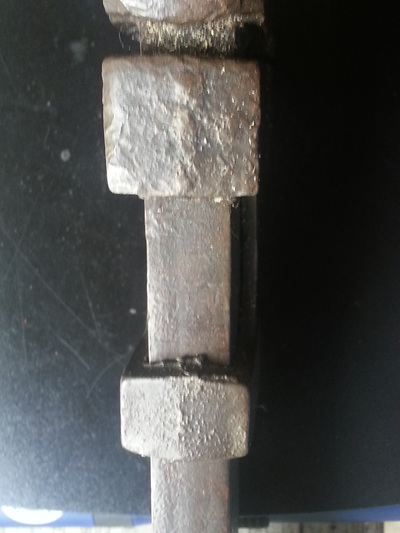
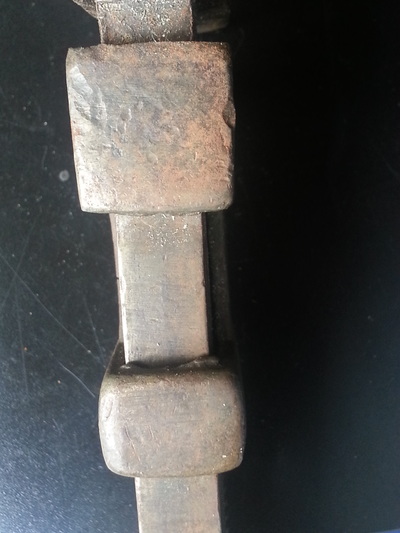
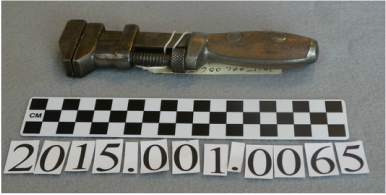
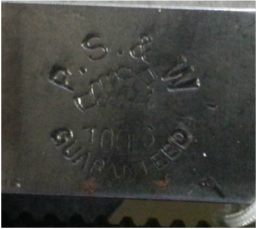
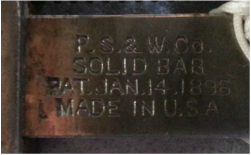
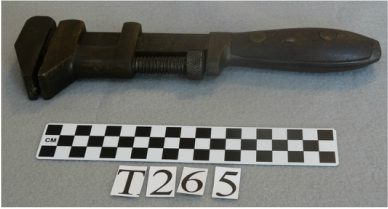
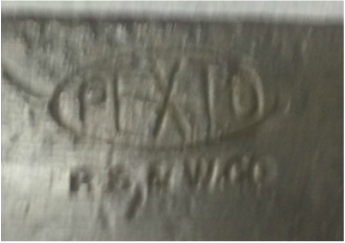
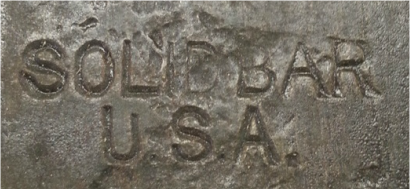
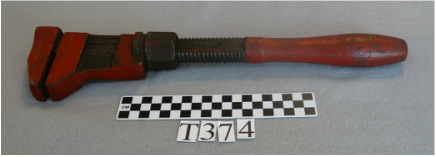
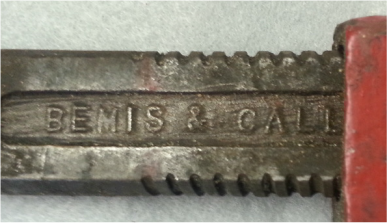
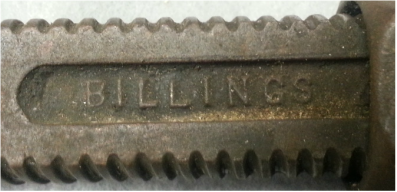

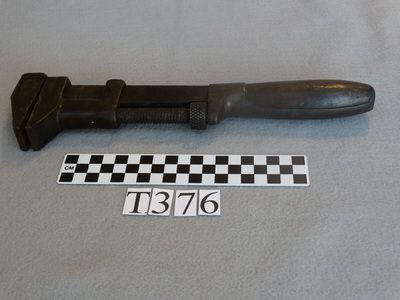
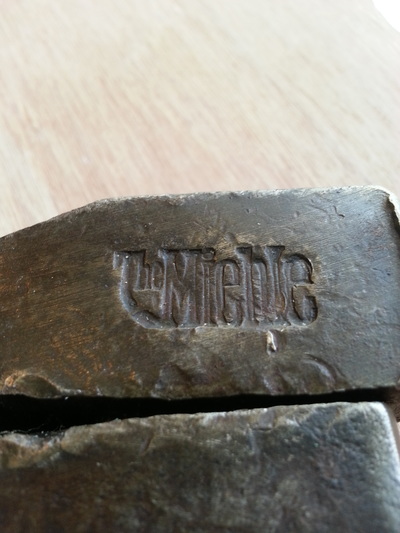
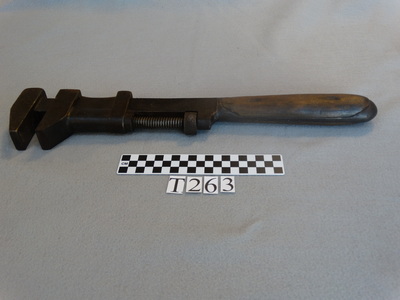
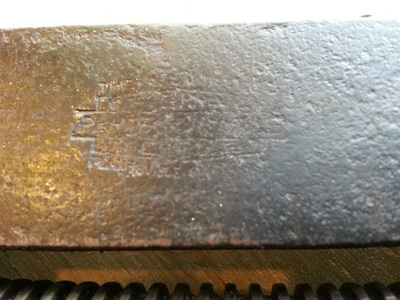
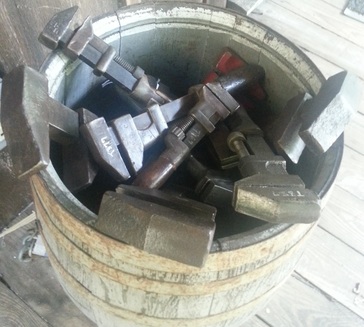
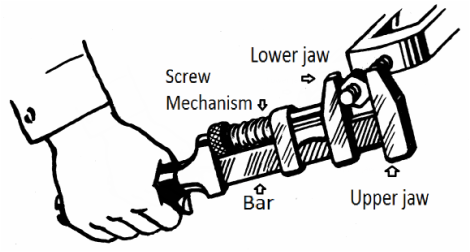
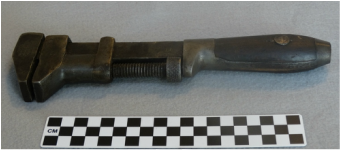
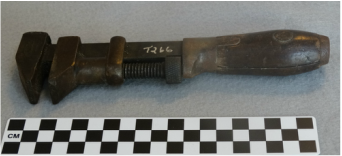
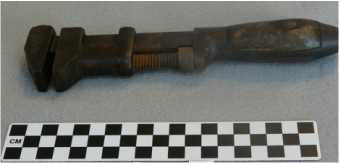
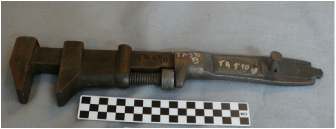
 RSS Feed
RSS Feed
